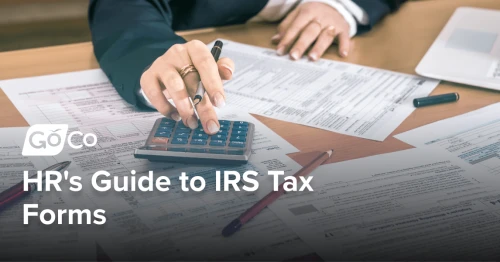
This authoritative guide strives to demystify the complex world of HR compliance and provide you with all the resources and understanding needed to manage your company's HR compliance efforts effectively and efficiently.
50% of HR professionals lack confidence in keeping up with compliance laws.
Maintaining HR compliance has become critical to any successful organization in an era marked by rapidly changing labor laws, increasing global interactions, and an ever-changing business landscape. Failure to comply can lead to significant legal repercussions, financial penalties, and damage to your company's reputation. In this context, this guide serves as a comprehensive roadmap to help HR professionals, managers, business owners, and anyone interested in the field navigate the labyrinth of HR compliance.
As this employment law evolves, we'll add more chapters to this guide, providing further in-depth coverage of different aspects of HR compliance. "Everything You Need to Know About HR Compliance" is more than just an article; it's an ongoing commitment to empower you with the knowledge and resources necessary to ensure your organization's HR compliance.
We hope you find this guide informative, practical, and indispensable in your HR compliance journey. Let's get started!
Table of Contents
Chapter 1
The Importance of HR Compliance
Chapter 2
The Critical Role of Employee Handbooks
Chapter 3
2025 HR Compliance Calendar
Chapter 4
Form W-4 Compliance Guide
Chapter 5
Form I-9 Compliance Guide
Chapter 6
Employee Document Retention
Chapter 7
Pay Equity and Transparency
Chapter 8
Employment Law: The Importance of Staying Up to Date
Chapter 9
Compliance Statistics

Chapter 1
The Importance of HR Compliance
In the ever-evolving business landscape, compliance with laws and regulations is crucial for every department within a company. Human Resources (HR) compliance significantly ensures fair HR practices and upholds legal standards. Staying updated with the changing industry standards is essential, as HR compliance laws are revised annually to reflect new requirements. In this chapter, we will explore the importance of HR compliance in 2024 and provide tips to ensure compliance within your organization.
The Evolution of Compliance
The year 2024 presents new compliance challenges, mainly due to a shift to hybrid and remote work arrangements. Data breaches have raised concerns about employee privacy, and ongoing discussions about minimum wage and cost of living have compelled companies to reevaluate their pay structures. These new compliance issues add to the current struggles faced by HR departments, such as document retention practices.
50% of HR professionals lack confidence in their ability to keep up with compliance laws.
Understanding HR Compliance
HR compliance involves developing policies and procedures that ensure fair practices in line with legal requirements. The objective is to strike a balance between adhering to all laws and regulations while achieving human capital resource objectives. Non-compliance can lead to penalties, fines, lawsuits, and potential bankruptcy for companies.
Non-compliance often results in hefty fines, and employment lawsuits have increased by 400% over the past 20 years.
Tips for Ensuring Compliance
To maintain compliance, HR professionals can follow three essential steps:
Utilize an HR Compliance Calendar: This calendar acts as a guide, providing a comprehensive overview of important deadlines and compliance requirements throughout the year. It helps HR professionals stay organized and meet all necessary obligations on time.
Implement HR Compliance Software: Adopting HR compliance software streamlines the management of employee information, leave, and other essential data in one centralized location. This simplifies compliance tracking and reduces the risk of errors or oversights.
Seek Professional Support: Engaging a professional consultant or HR service can help manage compliance effectively. These experts have in-depth knowledge of HR laws and regulations and can provide guidance tailored to your organization's needs.
HR compliance is essential for the success and ethical operation of any organization. Adhering to laws and regulations helps create a fair and safe work environment while mitigating the risk of penalties, fines, and lawsuits. By following an HR compliance calendar, utilizing compliance software, and seeking professional support, HR professionals can ensure compliance in 2024.
Implementing the provided compliance checklist will further strengthen your organization's HR practices. For more in-depth insights and guidance, we encourage you to read GoCo's full blog post on the importance of HR compliance in 2024, which includes a free checklist to help you stay on track.

Chapter 2
The Critical Role of Employee Handbooks
Many view the employee handbook as a simple formality, an overabundance of fine print pages that rarely see the light of day. Yet, this undervalued resource is a cornerstone of HR compliance, shaping the employee experience while protecting the organization from legal pitfalls.
The employee handbook embodies your organization's policies and procedures. It outlines expectations, standards, rights, and responsibilities, acting as a road map for the employer and employee to navigate their professional relationship. Ensuring this handbook aligns with labor laws and regulations is crucial for HR compliance. A well-crafted, legally compliant handbook protects your organization against lawsuits, fines, and reputational damage.
The Purpose of Employee Handbooks
One significant role of the handbook is establishing clear communication about company policies. Policies regarding non-discrimination, sexual harassment, workplace safety, data protection, and other critical areas are spelled out explicitly in the handbook. This clarity helps employees understand their rights and responsibilities, creating a safer, more inclusive, and respectful workplace environment.
The handbook also outlines the procedures for reporting violations or issues, providing a clear pathway for addressing grievances. It emphasizes the organization's commitment to providing a fair, non-retaliatory environment for those raising concerns. This transparency fosters trust and confidence in the organization, improving employee morale and retention.
Furthermore, the handbook serves as legal protection. In an employee dispute, it serves as evidence of the organization's policies and the employee's acknowledgment of them. If a lawsuit occurs, the handbook proves that your organization took necessary steps to inform and protect its employees, which can significantly bolster your defense.
However, having a handbook isn't enough for HR compliance; regular updates are essential. Employment laws and regulations frequently evolve, as should the organization's policies. Keeping the handbook current is necessary to accurately reflect the changing landscape of labor laws and workplace norms. Periodic reviews and updates conducted with legal experts can help maintain its effectiveness and relevance.
The employee handbook isn't just a paperwork exercise but a fundamental tool for HR compliance. It helps establish clear guidelines, create a conducive work environment, protect the organization legally, and reinforce a culture of integrity.
It's a testament to the organization's commitment to fairness, respect, and legal compliance. For HR professionals, appreciating its importance and maintaining its relevance is critical to effective management and risk mitigation.

Chapter 3
2025 HR Compliance Calendar
Staying compliant with HR regulations is a critical responsibility for HR professionals in 2025. The HR Compliance Calendar for the year provides a comprehensive overview of all the important deadlines, from tax filings to employee notifications.
2025 brings new challenges for HR professionals, from employee retention to hybrid engagement and upskilling the workforce. Amidst these responsibilities, HR departments must also navigate the ever-changing world of employment regulations, payroll requirements, document retention, and benefits compliance. Ensuring compliance with these regulations is crucial, and to help HR professionals stay organized, we've compiled the ultimate HR Compliance Calendar for 2025. This calendar outlines all the important deadlines and provides helpful tips to ensure your HR department remains compliant throughout the year.
64% of HR managers lack the time and resources to meet HR compliance challenges.
By following this calendar and incorporating additional compliance considerations such as employee safety training and annual audits, HR departments can ensure they meet all their obligations and avoid penalties. For a more detailed understanding of each deadline and compliance requirement, we encourage you to read GoCo's full blog post on HR compliance deadlines for 2025.

Chapter 4
Form W-4 Compliance Guide
Form W-4, or the Employee's Withholding Certificate, is an IRS document that helps determine the federal tax withholdings from an employee's paycheck. This withholding relies on employee data that can fluctuate, such as marital status and dependents. Therefore, employees should update their W-4 forms annually to accurately reflect these changes.
The information provided on the W-4 Form is combined with the Wage and Tax Statement (W-2) to generate the employee's annual earnings report. Therefore, employers and employees must understand the purpose and importance of this form.
Top HR compliance issues include wage and hour regulations, workplace safety, diversity and inclusion initiatives, data privacy regulations, employee benefits administration.
So, who is required to complete a W-4 form? The answer is relatively simple. All new hires must submit a W-4 when they start working, allowing employers to determine the appropriate tax withholdings from their paychecks. Existing employees who experience significant life changes, such as getting married, getting divorced, having a child, or changing jobs, should also fill out a new W-4 form to ensure accurate withholding.
Additionally, employees who wish to adjust their tax withholdings for various reasons, such as increased non-wage income, previous tax refund discrepancies, or major purchases, can submit a new W-4 form that reflects their current circumstances.
Filling out the 2024 W-4 form is a straightforward process. The form consists of five sections, but employees only need to complete sections one and five. Section six is to be filled out by the employer.
It's essential to stay up to date with the recent W-4 updates. For the 2024 W-4 form, the IRS has made minor changes including a new tax withholding estimator for individuals (and their spouses) who have self-employment income, and updated amounts for the 2024 Deductions Worksheet.
Knowing the common mistakes associated with the W-4 form is crucial to ensure compliance. Employers should avoid completing the form on behalf of employees, reminding employees to update their records when necessary, and providing unsolicited advice on form entries. On the other hand, employees should avoid completing unnecessary sections and making unauthorized changes to the form.
It's worth noting that state-specific withholding requirements may vary. While some states use the federal W-4 form as a guide, others have state-specific forms that may need to be updated to align with federal changes. Employers should be aware of these variations and ensure compliance with federal and state requirements.
The repercussions of incorrect filing can be severe. Underestimating federal tax withholdings may result in surprise tax bills and potential penalties. Similarly, entering false information or failing to provide accurate details can lead to fines or imprisonment. Employers are responsible for calculating withholdings based on the information provided by the employee but are not required to verify its accuracy.
To delve deeper into W-4 compliance and understand its intricacies comprehensively, we encourage you to read GoCo's complete guide to W-4 compliance. This guide will provide detailed information and actionable insights to ensure compliance and streamline the W-4 process within your organization.

Chapter 5
Form I-9 Compliance Guide
Understanding and complying with the requirements of Form I-9 can be a complex and daunting task for employers. This comprehensive guide will provide you with the clarity and knowledge you need to navigate the intricacies of verifying employment eligibility. Updated for 2024, this guide includes the latest information, ensuring you stay up-to-date with the evolving landscape of Form I-9 compliance.
Form I-9 is an essential document employers use to verify the identity and employment authorization of employees in the United States. It requires employees to provide information about their identity and submit documentation supporting their work eligibility. The form consists of three sections, with sections one completed by the employee and two and three completed by the employer.
I-9 Form Requirements
Both employees and employers have specific requirements when it comes to Form I-9:
Employers must have a completed I-9 form on file for each eligible employee.
Employees must complete section one of the form on or before their first day of employment.
Employers must complete sections two and three within specific timelines based on the employee's start date.
It is essential to use the correct edition of the form, which can be found on the USCIS website.
Employers should be aware of additional requirements for employees in Puerto Rico and certain exemptions for specific categories of workers.
Who is Required to Fill Out an I-9 Form?
The I-9 form is required for new employees, rehires, and employees requiring re-verification. Existing employees who have previously completed a valid I-9 form are not required to submit a new form unless specifically requested.
Employment Eligibility Documents
Employees must submit documents that establish their identity and employment eligibility. The documents are categorized into three lists: List A, List B, and List C.
List A documents establish identity and employment eligibility and include items such as a US passport or permanent resident card.
List B documents establish identity and can include items like a driver's license or state ID card.
List C documents establish employment eligibility and can include items like an employment authorization document issued by the Department of Homeland Security.
Employers should carefully review the Lists A, B, and C documents and ensure they comply with the requirements. Expired documents are not acceptable except in certain circumstances outlined by the USCIS.
For a more comprehensive understanding of I-9 compliance, we encourage you to read GoCo's complete guide to W-4 compliance, which provides in-depth information and practical tips to help you ensure compliance with this critical employment eligibility verification process.

Chapter 6
Employee Document Retention
Maintaining and retaining employee documentation and records is crucial to HR compliance. Employers must adhere to federal, state, and local laws that govern employee document creation, maintenance, and retention. A well-defined employee document retention policy and process is essential for organizations of all sizes. In this chapter, we will explore the importance of employee document retention and provide best practices to help you navigate this critical aspect of compliance.
Which Employee Documents Should You Keep? Employee documents encompass many records, including job applications, pre-employment test results, Form I-9 documentation, referrals, drug testing results, job descriptions, promotions, terminations, compensation packages, payroll documents, and more. Retaining these documents to ensure legal compliance and facilitate organizational processes is crucial.
Legal Employee Record Retention Requirements
Federal and state laws mandate specific retention periods for various employee and employment documents. Here are some critical federal retention requirements:
Form I-9: three years after the employee's hire date or one year after termination (whichever is later). It's essential to keep I-9 forms separate from other personnel documents.
Form W-4: four years
FMLA records: three years
HIPAA records: six years
OSHA records: five years
COBRA records: six years
Benefit plan documentation: six years after plan termination
Payroll records: at least three years
Tax records: four years
In addition to federal requirements, HR professionals must comply with state-specific retention requirements. Each state may have its regulations regarding document retention, including state tax documents and the "right to view personnel files" laws.
Best Practices for Managing Employee Records
To effectively manage employee records and ensure compliance, HR professionals should follow these best practices:
Conduct an internal HR audit annually to assess your record-keeping and document retention process.
Invest in a secure HR information system (HRIS) to streamline record-keeping processes and enhance compliance.
Stay updated on federal and state statutes and regulations, making necessary adjustments to internal processes.
Implement electronic document security measures, such as encryption, to protect confidential employee information.
Develop a disaster prevention and recovery plan to safeguard and retrieve employee records in case of emergencies.
Train HR employees on best practices to ensure compliance and protect sensitive employee information.
To learn more about creating a compliant and secure employee document retention policy and process, we encourage you to explore GoCo's full guide to employee document retention. Take the next step towards achieving comprehensive compliance by utilizing the right tools and resources.

Chapter 7
Pay Equity and Transparency
In the past decade, we have witnessed a paradigm shift from traditional employer practices toward embracing pay equity and transparency. For years, "trusted employees" in high-ranking roles like HR, Finance, or Executive positions were privy to the compensation details of their colleagues, while other employees remained in the dark. Some companies even obscured the salaries of key employees to maintain secrecy. These outdated and often illegal practices are being replaced by policies encouraging conversations around fair and equitable pay.
With the increasing demand for transparency from college job boards to customer RFPs, understanding pay equity and transparency has become essential. These two terms relate to how an organization communicates and implements its compensation policy. Pay transparency involves employers disclosing pay information, including base wages, bonuses, commissions, and pay increases to existing and prospective employees. This transparency is a tool to reinforce pay equity - ensuring equal pay for equal work. A pay equity and transparency system deters wage discrimination and inspires employee confidence in fair compensation.
Despite the growing pressure to implement these practices, businesses struggle to adopt pay transparency and equity fully. One key reason is that pay structures often hinge on factors like individual skill levels, experiences, and education, which can be complex to explain. Moreover, concerns about competitors gaining an advantage from revealed pay strategies can deter transparency.
However, ignoring pay transparency and equity isn't an option. Numerous Federal and state laws have made equal pay for equal work and the freedom to discuss wages a legal obligation. States including Washington, California, Colorado, New York, and others, have specific equal pay laws. Many localities also mandate pay transparency. For example, New York City and Westchester County require employers to display the pay range for any job or promotion opportunity in job advertisements.
The impact of pay transparency and equity extends beyond legal compliance. Transparent management practices, perceived as fair and certain, increase job satisfaction and security. In fact, 67% of employees surveyed desire greater pay transparency and equity. Transparent compensation practices also streamline the hiring process, minimizing wasted time on candidates who ultimately withdraw due to pay discrepancies.
Despite growing awareness, gender and race wage gaps persist. Women, particularly Black women, often earn significantly less than their male counterparts in the same positions. Addressing these discrepancies is a primary driver behind the push for pay transparency and equity.
Implementing effective pay equity and transparency policies involves:
Auditing existing practices.
Ensuring any pay differences are based on legally acceptable criteria.
Designing a transparent and communicative pay policy.
Companies must regularly review, reinforce, and update these policies while maintaining compliance with laws across all operational states.
In essence, embracing pay transparency and equity fulfills legal requirements and plays a pivotal role in attracting and retaining talent. It aids in reducing potential liabilities while promoting a more fair and inclusive working environment.
If this glimpse into pay equity and transparency piqued your interest, delve deeper into this topic with GoCo's comprehensive guide on the subject. You'll find practical insights on how to design, implement, and manage your pay equity and transparency policies, helping your organization navigate the complex terrain of modern compensation practices.

Chapter 8
Employment Law: The Importance of Staying Up to Date
One of your most important responsibilities is ensuring your workplace complies with all relevant employment laws. Staying current on changes and revisions to these laws as they occur is essential for protecting your company's bottom line and maintaining its outstanding reputation among employees.
The Risks of Falling Behind on Labor and Employment Laws
It's easy to overlook the importance of keeping up with labor and employment laws, but falling behind has serious consequences. Not only can you face legal action and expensive fines, but your company's reputation may suffer, decreasing employee morale.
It's crucial to stay informed and updated on changes in labor and employment laws, as they directly impact your business and its success. By educating yourself and your team on these regulations, you can operate your business responsibly and competently, avoiding potential headaches.
Effective Strategies for Keeping Up with Employment Laws
With employment laws constantly changing and evolving, staying informed can be challenging for employers and HR professionals. However, several tips and tools can help you stay ahead of the curve.
Signing up for newsletters or alerts from trusted sources can provide regular updates on changes or developments in employment law.
Attending seminars or webinars hosted by industry experts can deepen your understanding of these laws and their potential impact on your business.
Investing in compliance-focused software or other technology can streamline keeping up with new regulations.
Addressing Compliance Issues: A Proactive Approach
Encountering a compliance issue, whether from an employee or within the company itself, can be nerve-wracking for business owners. It's essential to take a proactive approach to resolving the problem. Start by thoroughly investigating the situation and gathering any relevant information or documentation.
Once you've identified the issue, determine the appropriate action to take – this may involve retraining employees on company policies or making necessary procedure changes.
Communicate with stakeholders, including shareholders and customers, to ensure they know the steps being taken to address the issue. The best way to handle compliance issues is to be open, transparent, and swift in correcting mistakes. Doing so helps mitigate any potential negative impact on your business's reputation and maintain stakeholder trust.

Chapter 9
Compliance Statistics
According to industry analysts, 46% of companies use HRIS platforms for compliance support, a 20% increase compared to last year's adoption rate. These tools help HR departments streamline their compliance processes with ease. The benefits are too good to pass up!
Here are a few more compliance statistics you need to know:
50% of HR professionals lack confidence in keeping up with compliance laws. (UpCounsel)
64% of HR managers need more time and resources to meet HR compliance challenges. (UpCounsel)
Non-compliance often results in hefty fines, and employment lawsuits have increased by 400% over the past 20 years. (UpCounsel)
In 2024, the Occupational Safety and Health Administration set fines for willful and repeated violations at $161,131 per violation. (OSHA)
Serious, other-than-serious, and posting requirements fines average $16,131 per violation. (OSHA)
Top HR compliance issues include wage and hour regulations, workplace safety, diversity and inclusion initiatives, data privacy regulations, employee benefits administration (CPAPA)
More HR Compliance Resources


